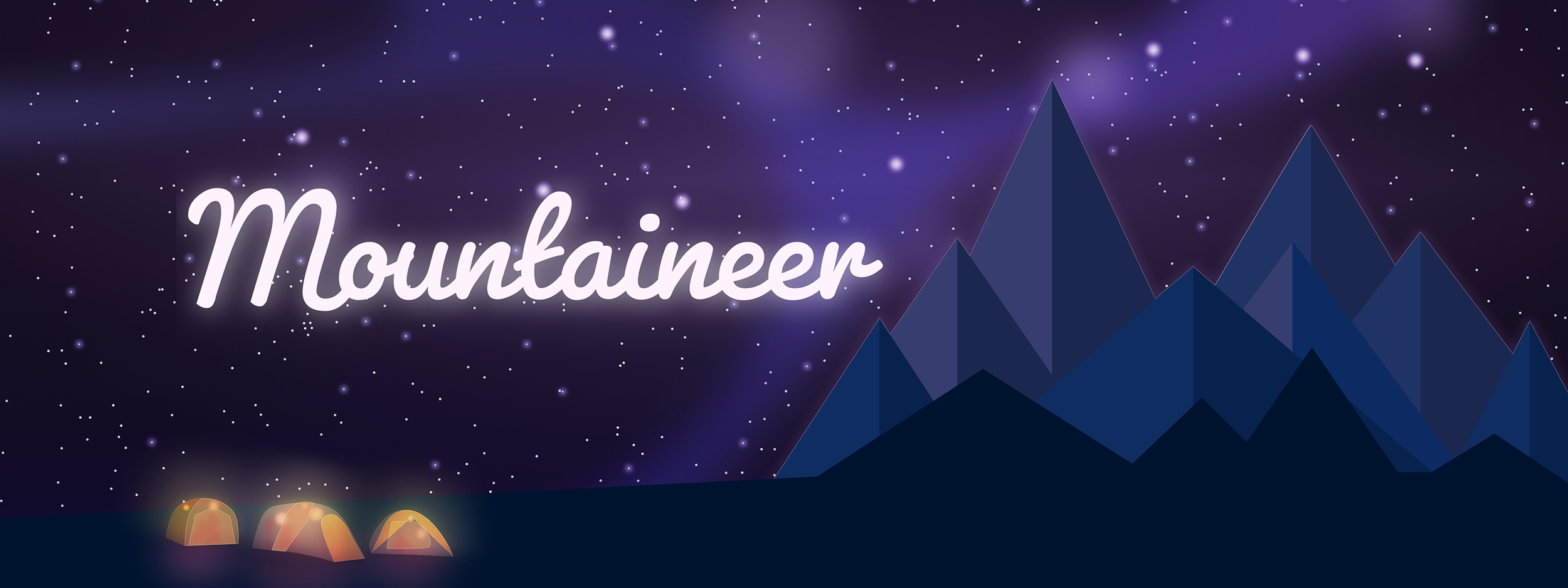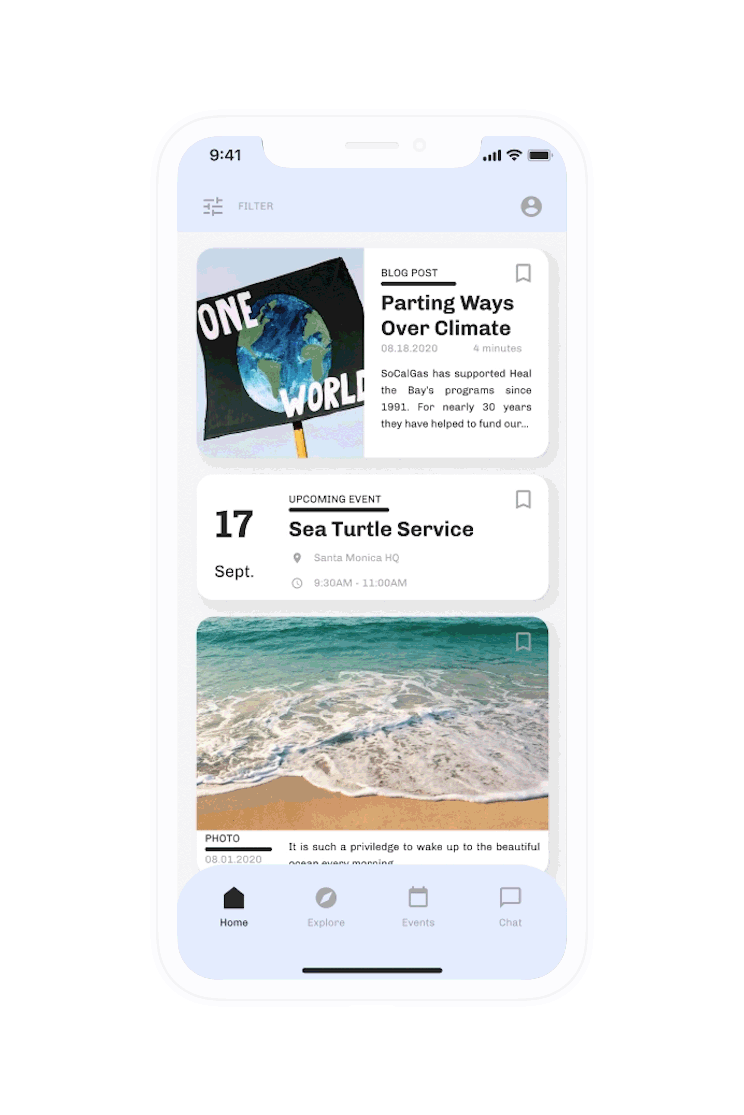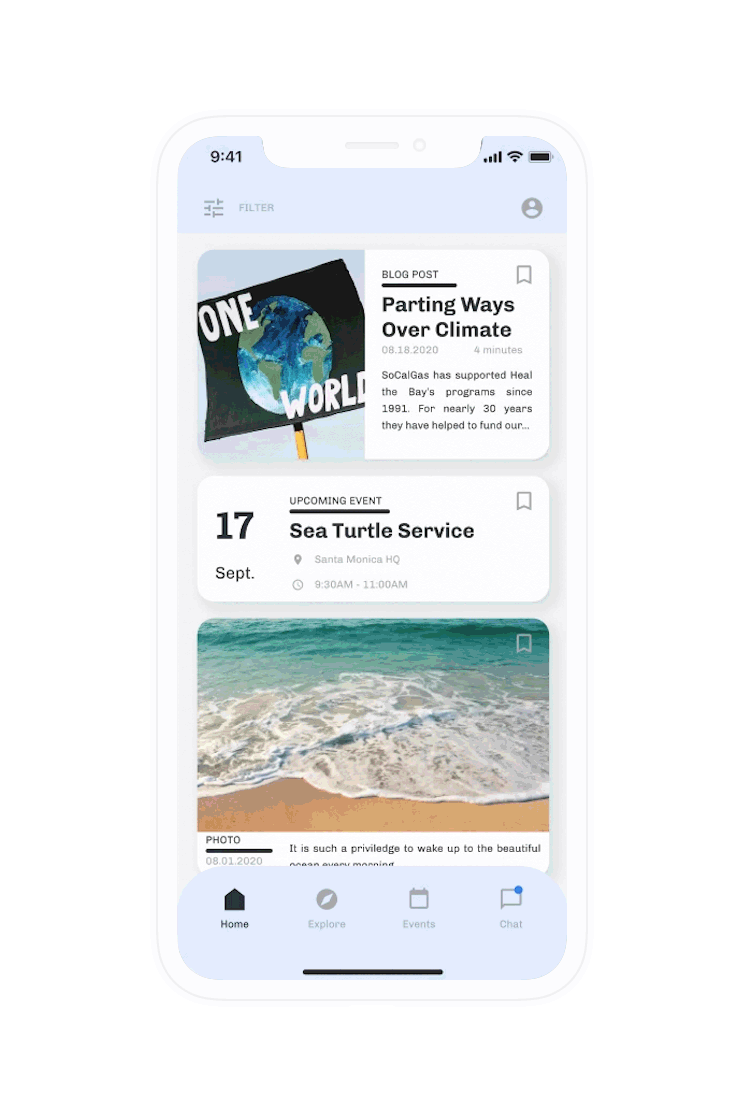
Organization: Heal the Bay is an environmental nonprofit in Santa Monica committed to protecting the coastal ecosystem local to LA.
Event: Heal the Bay partners with the California Coastal Commission every year to organize and facilitate Coastal Clean-Up Day. Last year the event diverted over 800,000 pounds of garbage from the coastal areas around LA in only 3 hours.
Challenge: We were tasked with finding a way to help volunteers and staff better coordinate the event before, during, and after. Through this we hope to inspire more volunteer enrollment and repeat volunteers. This was a spec project.
Role: UX Research Co-Lead, UX Designer (Calendar+Mapping Lead)
Remote Team: Joseph Routt, Aleia Hayag
Date: 2020
Tools: Sketch, Figma, Trello, Illustrator, Photoshop, Miro, Otter, Google Suite and Maze
Who are our volunteers?
We recruited people through a survey that have volunteered within the past year to interview remotely. We wanted to get a better idea of their preferences, pain points, and overall goals/motivations in regard to their volunteering experience. We also learned about their steps to be more eco-conscious and help fight climate change, since we wanted to see what motivates people to sign up for events like Coastal Cleanup Day.
Key Insights
Volunteers like the act of volunteering to be tied to a larger group or social experience. And in their personal life, they use their mobile digital devices to connect, and foster a larger sense of community.
Volunteers like to feel personally rewarded, and they like to be able to use their own unique skillset to help out.
Volunteers expressed discomfort and confusion with the volunteer space. They didn’t know how to get involved, and felt extremely intimidated about helping out as a “newbie” in an established organization.
Let’s make our volunteers real
To give those insights and interviews more meaning, we created a user persona, which is an archetype of our group of volunteers. We named him Chuck and he helped bring to life the common themes we found in our interviews.
Delving into Chuck’s Experience
In order the fully address Chuck’s needs, we wanted to understand his entire experience from his initial sign up all the way to the days after completing the event, where he is reflecting on his accomplishments. Using some pillars of service design we looked at key touch points and interactions, and identified opportunities. This really informed our user flows, and gave some hierarchy to the features we implemented.
Service Design Blueprint (click for more detail)
Experience…
The volunteer companion app
See Chuck Learn
In this walkthrough, we follow Chuck on his knowledge journey. He begins by scrolling through his Heal the Bay newsfeed and is soon inspired to check out a blog post that catches his eye. He also checks out the explore tab and sees what his future will look like through mapping sea levels and an immersive AR experience.
See Chuck Plan
Inspired by the blog content and resources he found on the app, Chuck decides to get involved. In this walkthrough, we follow him through selecting and signing up for an event, Coastal Clean Up Day
See Chuck Save the World!
It’s finally Coastal Clean-up Day and Chuck is eager to make a difference. We follow him through his check-in process and see how he keeps in touch with his teammates both through chat and a live event map. In the end, he is even greeted with a badge achievement, so he can see all his accomplishments and stay motivated.
See the full interactive prototype below
*Guppy takes place both before and during the event. You can fast forward and rewind using the buttons in the account tab.
Make sure to hit fullscreen for the best experience
Next Steps
I think we really would benefit from getting a Subject Matter Expert interview from one of the operations staff at Heal the Bay. This would validate or invalidate a lot of our assumptions, and give us a chance to ask important questions about the process. For example, where does all the garbage go? We are hoping that it’s not into a landfill.
Lessons Learned
Doing UX in an academic setting, essentially in a vacuum, was/is a little bit too idealistic in my opinion. I feel like a lot of our design and research driven decisions might not work in real life, or could potentially put excess stress on the backend logic of our application. Getting feedback from users and being their advocate was really great and important, but the feedback from developers, stakeholders, and other disciplines was missing. I am looking forward to experiencing the full realm of communication within the UX practice as I transition to working professionally.
Illustrations in this case study were courtesy of Irene Falgueras
Check out more of my work
-

Mountaineer
Spectrum Enterprise’s Design System
-

Helpboard
platform connecting clients and creative freelancers
-

Sushi
Samcart Universal System for Human Interface
-

Expunge Assist
A tool to help people clear their criminal records







